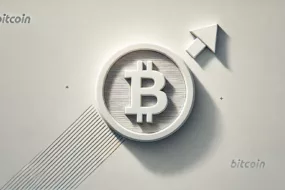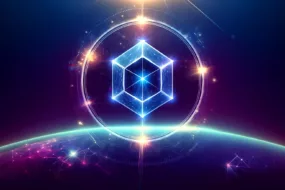
As we move into 2023, the market for NFT art continues to explode with new opportunities for artists to showcase and sell their work. But with so many options and platforms available, it can be overwhelming to know where to start.
That’s why we’ve created this step-by-step guide to help you navigate the world of NFT art and successfully sell your artwork.
We’ll take you through this process, providing you with the knowledge you need to succeed in this fast-paced and ever-changing world of digital art.
What Is NFT Art?
NFT, or non-fungible token, is a digital asset verified and secured using blockchain technology. It is a revolutionary way of owning and collecting digital assets.
‘NFT Art’ is a specific type of digital asset that can be stored in the blockchain network. NFT art has exploded in popularity recently, with some pieces selling for millions of dollars.
You might wonder how NFT art is any different from conventional digital art.
Imagine you have a digital painting on your computer. Anyone can copy, share, or even claim it as their own. But with NFT art, you can prove that you own the original, unique version of the artwork. It’s like owning a one-of-a-kind painting in the physical world.
NFT art is created by artists who use digital tools to create stunning pieces of truly unique art. Once the art is made, the artist can upload it onto a blockchain network and create an NFT. It acts like a digital certificate of authenticity.
How to Create and Sell Your NFT Art?
Creating NFT art is an exciting way to explore the intersection of technology and art. Here’s a quick guide to creating and selling your own NFT art.
1. Choose your tools
To create NFT art, you’ll need digital tools like graphic design software or digital drawing tablets. There are many different tools available depending on your artistic style and preferences.
2 Create and upload your art
Use your chosen tools to create your unique digital artwork. Be creative and experiment with different styles and techniques. Remember, your artwork should be original.
Once your artwork is complete, you must upload it to an NFT marketplace or platform. Many different platforms are available, each with unique features and fees. Some popular marketplaces include OpenSea, Nifty Gateway, and SuperRare.
On the platform, you’ll need to provide information about your art, such as the title, description, and file containing your artwork.
3. Mint your NFT
Minting your NFT is the process of verifying and creating your NFT. You’ll need to pay a fee to mint your NFT, which varies depending on the platform.
4. Set your price
Once your NFT is minted, you can list it for sale on the marketplace. You’ll set the price and wait for a buyer to purchase your unique digital artwork.
Consider the value of your artwork, the current market trends, and the fees charged by the platform to set the price of your NFT.
5. Market your NFT art
Promote your NFT art on social media, forums, and other platforms. Share your artwork with your followers, engage with the community, and leverage your network to get the word out.
Once a buyer purchases your NFT art, you’ll receive payment in cryptocurrency. Transfer the NFT to the buyer’s wallet and complete the transaction. Follow the platform’s guidelines and policies to ensure a smooth and secure sale.
Choosing the Right NFT Marketplace or Platform
Choosing the right NFT marketplace or platform is an important step in selling your NFT art.
To find a good NFT marketplace, consider the following factors. We will take OpenSea as an example to evaluate these factors.
1. Reputation and credibility
When choosing an NFT marketplace, it is important to consider its reputation and credibility. Look for marketplaces that have a proven track record of secure transactions and positive ratings on online forums and social media platforms. OpenSea, for instance, is recognized as one of the largest and most reputable NFT marketplaces in the world.
2. User interface
The user interface is a crucial factor to consider when selecting an NFT marketplace. Opt for platforms with user-friendly and easy-to-navigate interfaces, as this makes buying and selling NFTs more convenient. OpenSea’s website and mobile app have a simple and intuitive interface.
3. Fees
It is essential to choose a marketplace with reasonable fees for buying and selling NFTs. Keep in mind that some marketplaces charge high fees, so it’s important to know the fees involved before trading. OpenSea charges a transaction fee of 2.5% on all sales, which is lower than some of its competitors.
4. NFTs categories
When selecting an NFT marketplace, it is recommended to choose a platform that offers a diverse selection of NFTs across various categories. This will give buyers more options and increase the likelihood of finding something that they are interested in. OpenSea, for instance, offers NFTs in different categories, including art, gaming, sports, and collectibles.
5. Community and support
Lastly, consider the community and support provided by the NFT marketplace. Look for platforms with an active community of buyers and sellers and reliable customer support. OpenSea boasts a vibrant and supportive community of creators and collectors, and the company provides customer support through email and social media.
Conclusion
For artists looking to enter the space and sell their work as NFTs, it’s essential to have a solid understanding of the process and best practices involved.
By following this guide to selling NFT art, artists can confidently navigate the world of NFTs and take advantage of the many opportunities available to showcase and sell their unique and valuable artwork to a global audience.
With the right combination of creativity, strategy, and diligence, artists can thrive in this exciting and dynamic new world of digital art and asset ownership.
FAQs
1. What are the popular NFT marketplaces or platforms?
Some popular NFT marketplaces or platforms include OpenSea, Nifty Gateway, Rarible, SuperRare, Foundation, and KnownOrigin.
Each platform offers different features and benefits, so it’s essential to research and choose the one that best fits your needs and goals as an NFT artist.
2. What are the best practices for selling NFT art?
Some best practices for selling NFT art include,
- Creating high-quality and unique artwork
- Using reputable and secure marketplaces
- Pricing your NFTs competitively
- Engaging with the community and promoting your artwork through social media and other channels
3. What are the fees for selling NFT art?
The fees for selling NFT art vary depending on the platform. Generally, platforms charge fees for minting and listing NFTs and a percentage of the sale price as a commission.
These fees can range from a few dollars to hundreds of dollars depending on the platform and the value of the NFT. It’s important to understand the fee structure of the platform you choose to ensure you can price your NFTs appropriately.
For instance, OpenSea charges a transaction fee of 2.5% on all sales, which is lower than some of its competitors.





